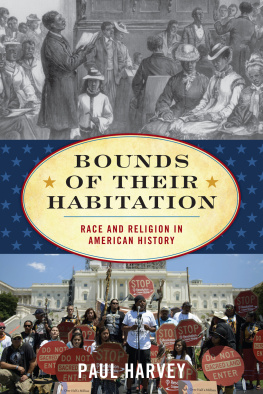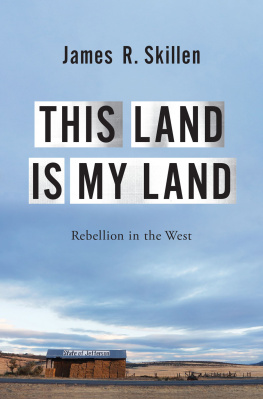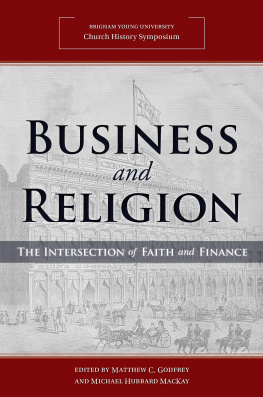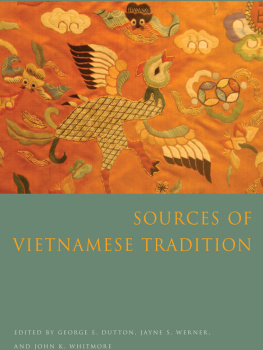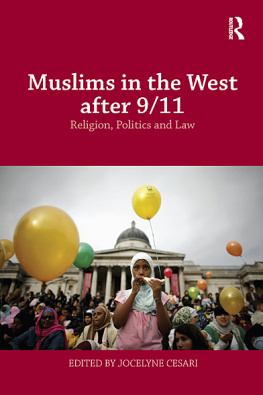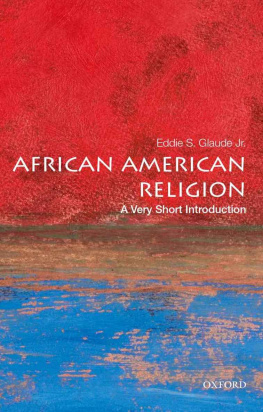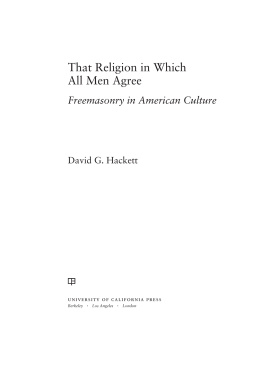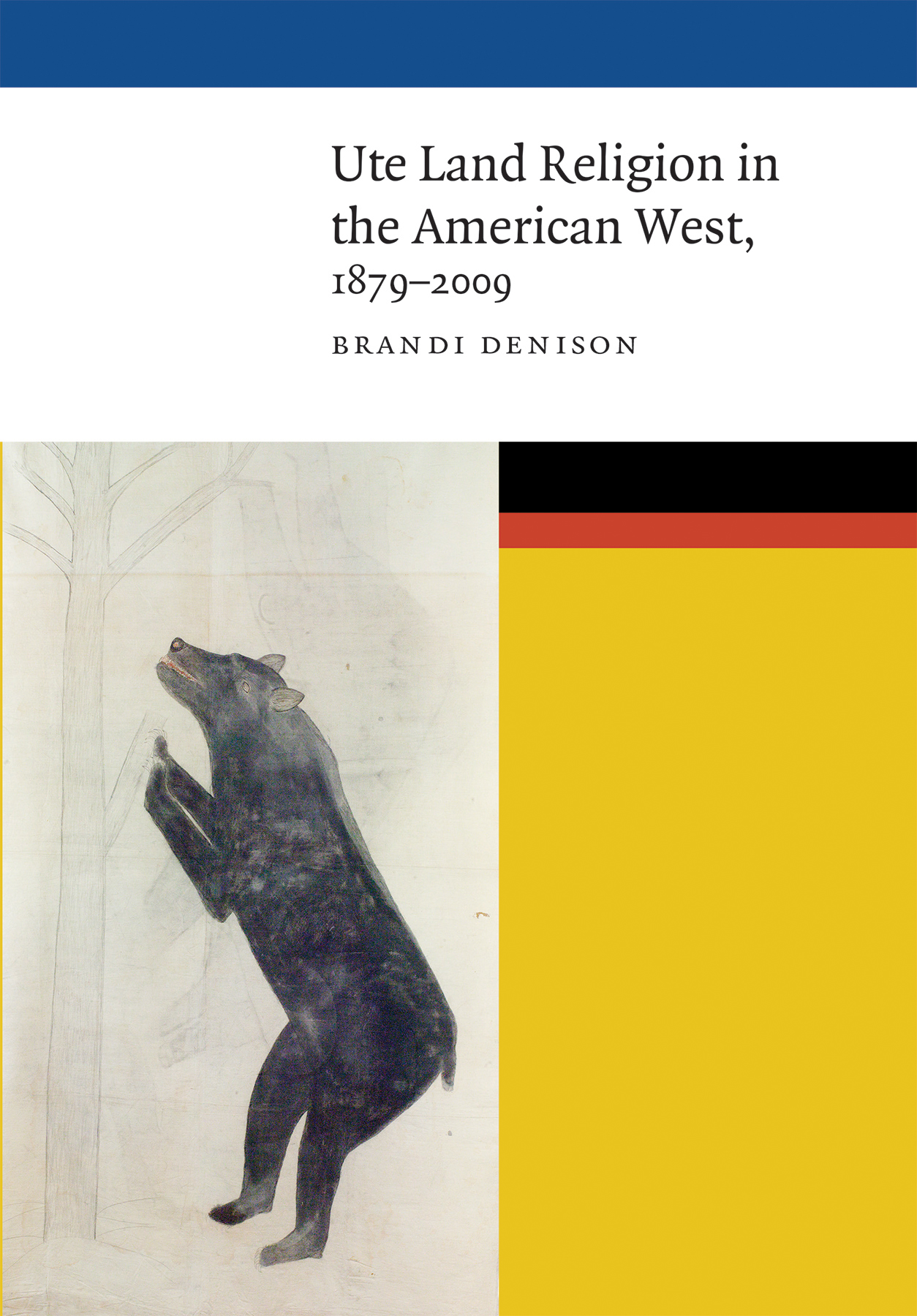Beautifully written, clear, and compelling. [This book] is grounded on a solid understanding of history, while also providing insightful interpretation and theoretical nuance.
Suzanne Crawford OBrien, professor of religion and culture at Pacific Lutheran University and author of Coming Full Circle: Spirituality and Wellness among Native Communities in the Pacific Northwest
This terrific book shows how white settlers in Colorado used the construct of Ute Land Religion to justify their appropriation of Native land, how Ute people both resisted and participated in that invention, and how the category of religion has functioned in the making and remaking of the American West.
Margaret D. Jacobs
Ute Land Religion in the American West, 18792009
Brandi Denison
Co-published by the University of Nebraska Press and the American Philosophical Society
2017 by the Board of Regents of the University of Nebraska
Cover designed by University of Nebraska Press; cover image: Ute Bear Dance flag, E.1971.1 (Scan #10041263), courtesy History Colorado Center.
Portions of chapter 2 were previously published as A Christian Disposition: Religious Identity in the Meeker Captivity Narrative, in Native American Adoption, Captivity, and Slavery in Changing Contexts, ed. Max Carocci and Stephanie Pratt (New York: Palgrave Macmillan, 2012), 14766.
All rights reserved
Library of Congress Cataloging-in-Publication Data
Names: Denison, Brandi, author.
Title: Ute land religion in the American West, 18792009 / Brandi Denison.
Description: Lincoln: University of Nebraska Press; American Philosophical Society, [2017] | Series: New visions in Native American and indigenous studies | Includes bibliographical references and index.
Identifiers: LCCN 2016041536
ISBN 9780803276741 (cloth: alk. paper)
ISBN 9781496201393 (epub)
ISBN 9781496201409 (mobi)
ISBN 9781496201416 (pdf)
Subjects: LCSH : Ute IndiansReligion. | Ute IndiansHistory. | Ute IndiansLand tenure. | WhitesRelations with Indians.
Classification: LCC E 99. U 8 D 46 2017 | DDC 979.004/974576dc23 LC record available at https://lccn.loc.gov/2016041536
The publisher does not have any control over and does not assume any responsibility for author or third-party websites or their content.
For Russthank you.
Contents
I grew up in western Colorado, as did my parents. My grandparents were late to the westward movement, with one set of grandparents escaping the dust bowls of Kansass Great Depression for the agricultural promise of western Colorado and another set of grandparents arriving from the Texas panhandle oilfields in the 1960s. My childhood summers were spent picking peaches, driving tractors, and throwing and dodging dried-up mud clumps. My cousins had watched the Meeker Massacre Pageant, and they taught me the story. One summer, in between peach picking duties, we spent our time acting out our understanding of what happened. In my limited, childish historical imagination, this was a very distant past and unrelated to my familys presence in Colorado, and my public school education did little to correct this notion.
I stumbled on Josephine Meekers captivity narrative in the University of Colorados library when I was an MA student there, and the captivity narrative reminded me of my childhood games. However, when I began to look into the timeline of Ute dispossession of Colorado, I realized that the ethnic cleansing had occurred a mere fifty years before my family arrived in Colorado. I wondered why I had always thought it was an ancient rather than the recent pasta question that I posed during my research presentation for the class. My confession that I did not know just how recent this history was inspired some loving (and justified) teasing. Teasing aside, I believed that the lacuna in my memory reflected mainstream American cultural memory. I wanted to dig deeper into the cultural mechanisms that papered over the immorality and brutality of Americas ethnic cleansing, one that made my familys ownership of Colorado land possible. I was also intrigued by the portrayal of Ute women as Christians in the captivity narrative. Why was morality portrayed through a white Christian lens rather than an indigenous one? These two questionshow could I grow up in Colorado without knowing about the history of Indian dispossession, and why did the captivity narrative represent Ute women as Christians?framed my research, leading me to consider the intersections of memory, gender, race, religious identity, and land ownership. Ira Chernus, one of my mentors, once noted that as scholars, we always are writing about ourselves. Another mentor, Grant Wacker, added that a writers task is to make it interesting to others. I leave it to readers to decide if I have been successful.
This book has been in process a long time, but I have been fortunate to have good company along the way. The librarians at the Denver Public Library helped to make the research enjoyablesome of my happiest days were spent in the research room there. Particular thanks go to Wendel Cox, Noel Kalenian, and Dennis Hagen. The archivists at the History Colorado Center were helpful in suggesting additional sources about the Union Colony, and Nathan Meeker and Ashley Baranyk at the Greeley History Museum helped with the history of Susans Tree. The librarians at the Meeker Public Library located Meeker Massacre Pageant scrapbooks and connected me with Steve Wix, who gave me several versions of the script for the Pageant. Steve Wix gave me a very open and candid interview as well. Matt Bokovoy, my editor at the University of Nebraska Press, has helped to make this first book project enjoyable. The research was funded by the Thomas F. Ferdinand Summer Research Fellowship through University of North Carolinas Graduate School, the University of North Floridas Faculty Development Research Grant, and Lily Endowment, Inc. I am grateful for these funds, which allowed me to explore a range of archives and attend the Smoking River Powwow.
Lynn Lockwood, of the Rio Blanco Forest Service, was generous with her time and contacts, helping me to connect with other stakeholders in the Smoking River Powwow. She also provided helpful comments on an earlier version of the manuscript. Joe Sullivan spent a day with me, detailing his work on the Milk Creek Battle Monument and riding around the Meeker area. I enjoyed spending time with him, and I appreciate both his time and his work on representing a multivalent past. Thanks go to Becky Dunham for introducing me to Joe. Forest Cuch was also generous with his time and contacts. Sadly, three key people involved in the Smoking River Powwow have passed onLoya Arum, Clifford Duncan, and Dave Steinman. All three were instrumental in the Smoking River Powwow, and each was dedicated to cultural education. I am grateful for the time they gave me in working on this project. I also am deeply grateful to the members of the Northern Ute for speaking with me. In a small token of thanks, the proceeds of this book will go to the Ute Indian Tribe Head Start program. In addition to mainstream programming, the Ute Tribe Head Start program includes a Mini Powwow and Bear Dance to educate Ute children about their heritage.



